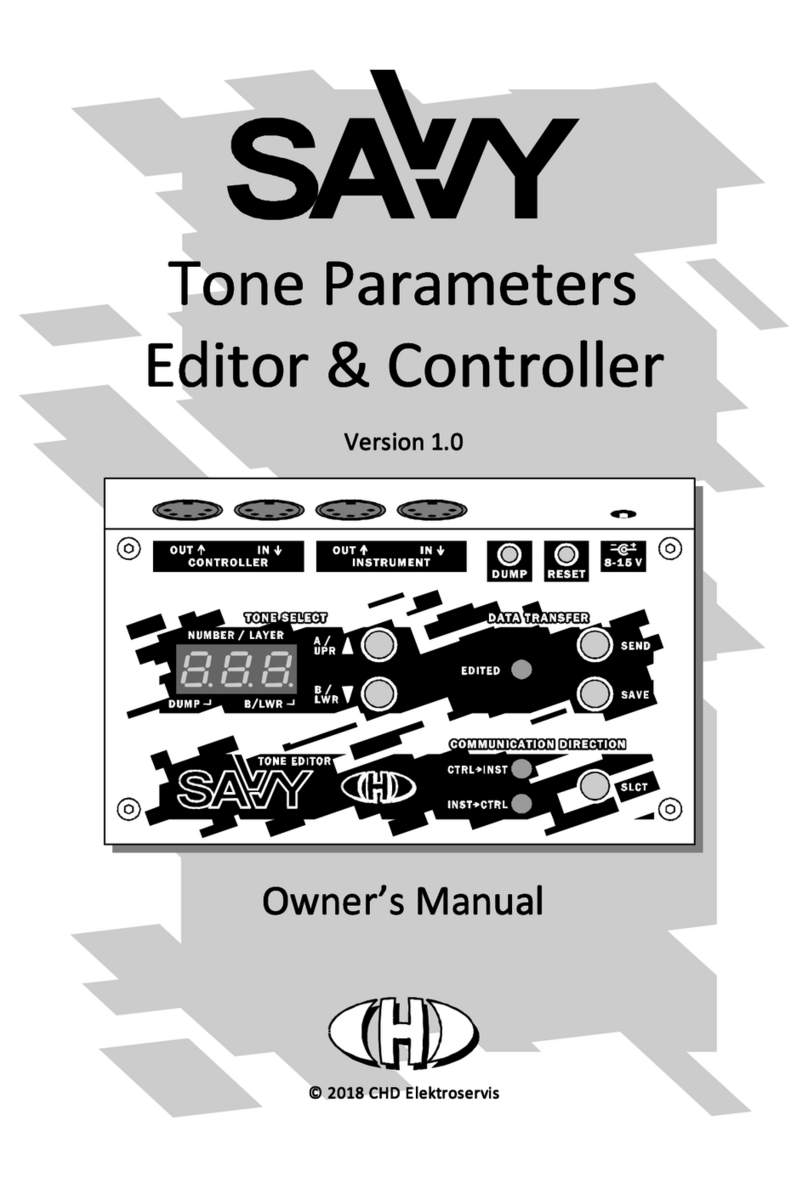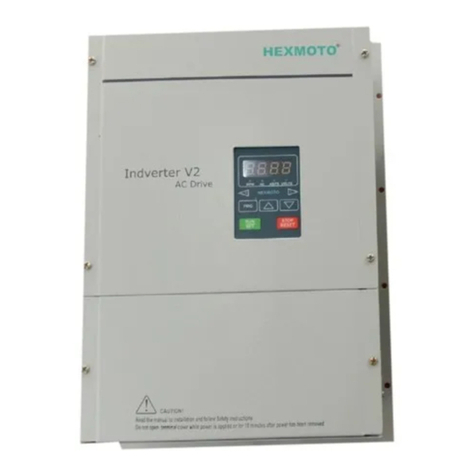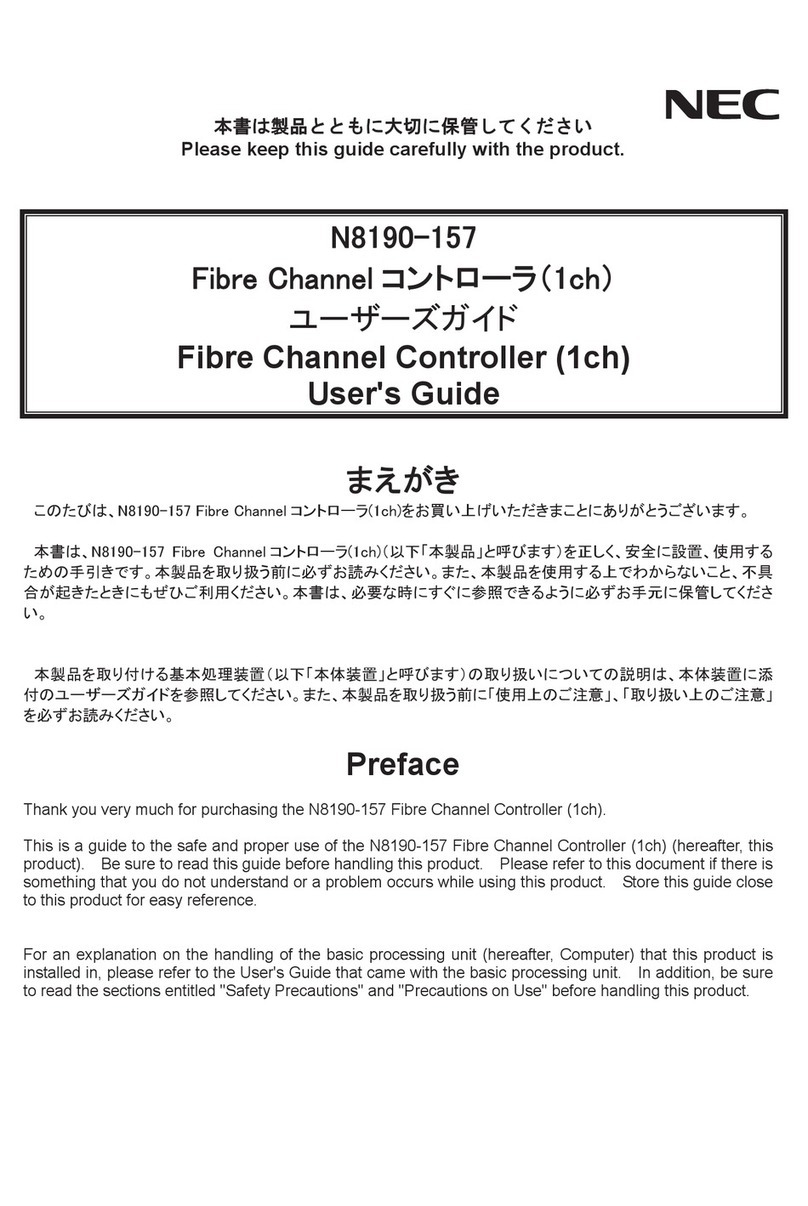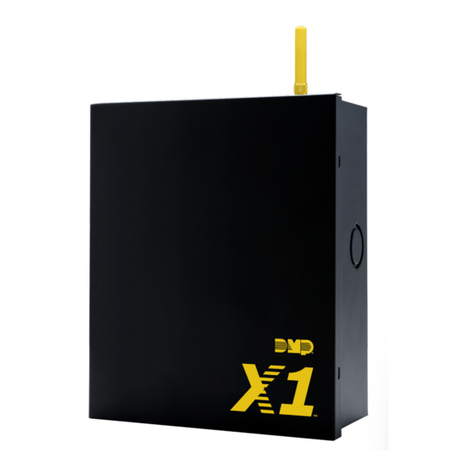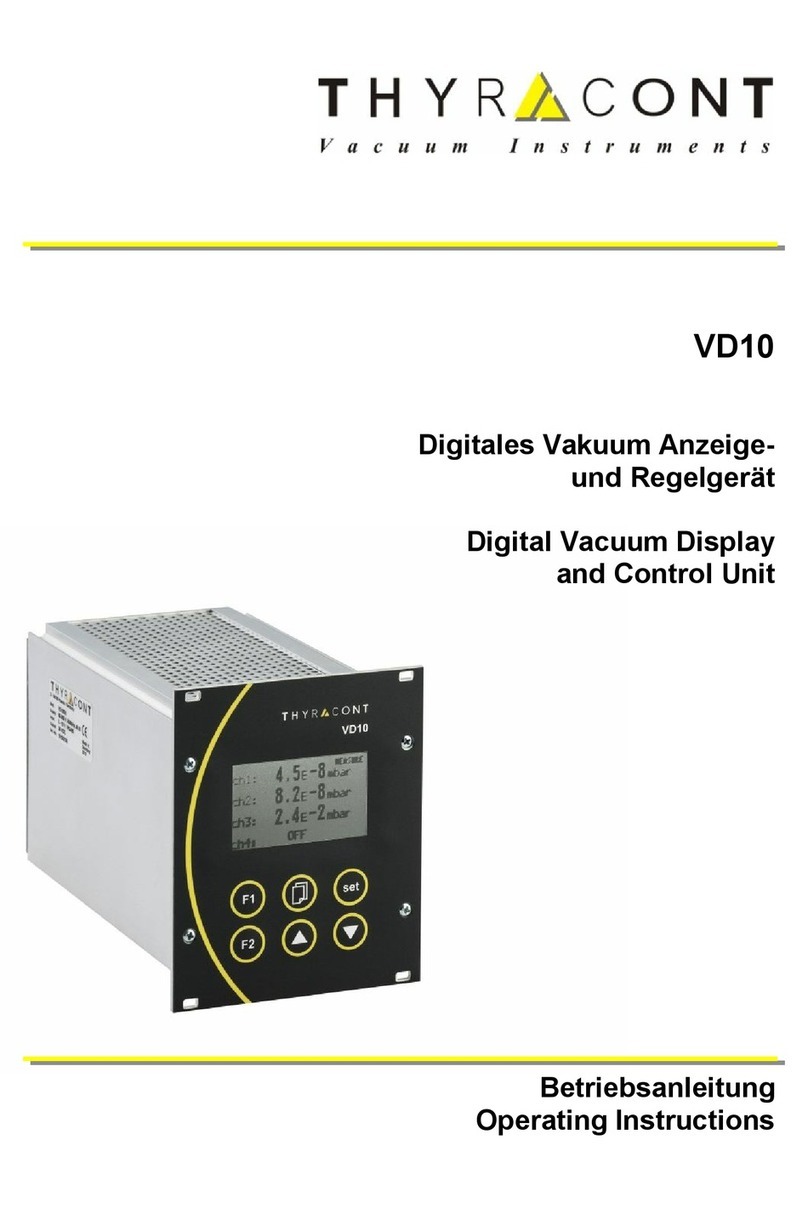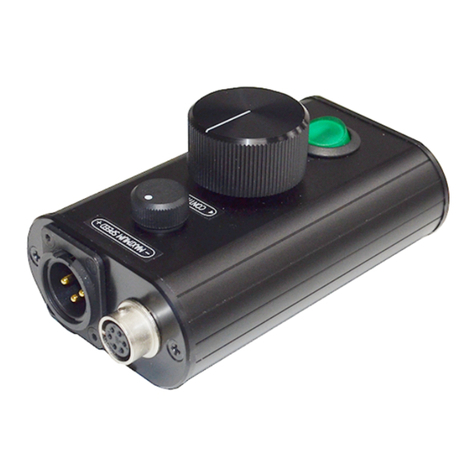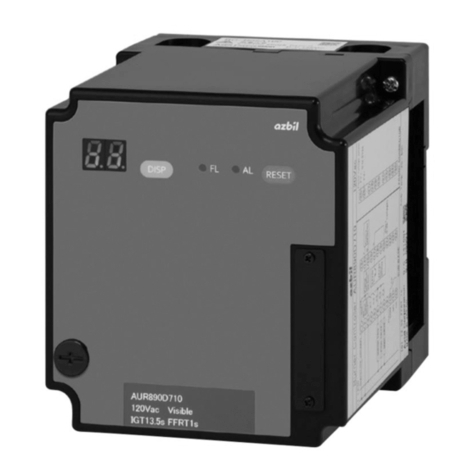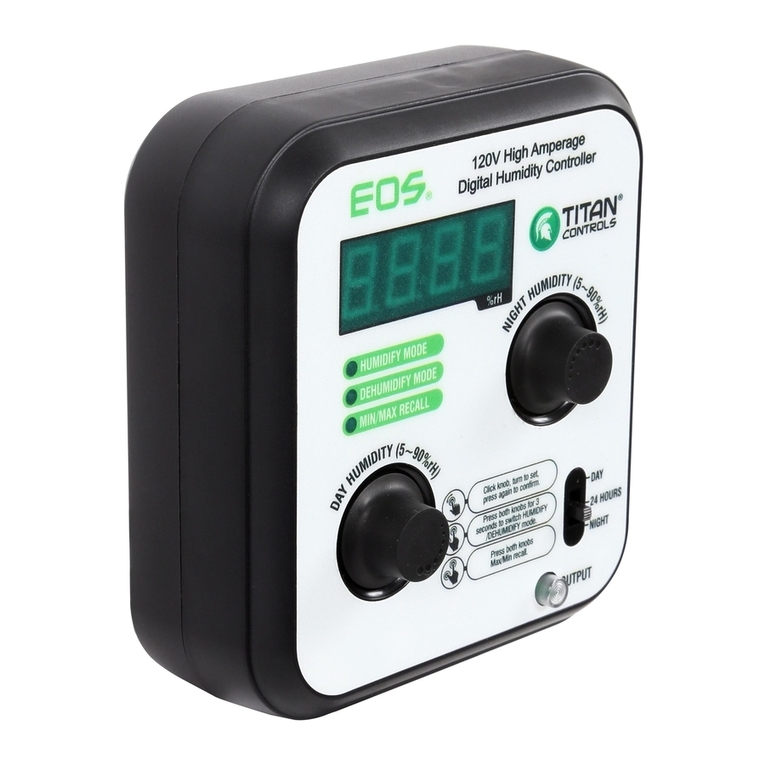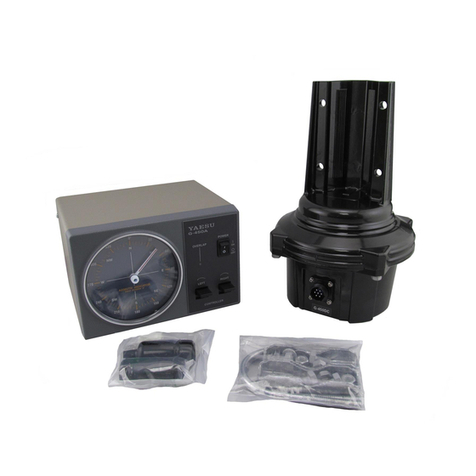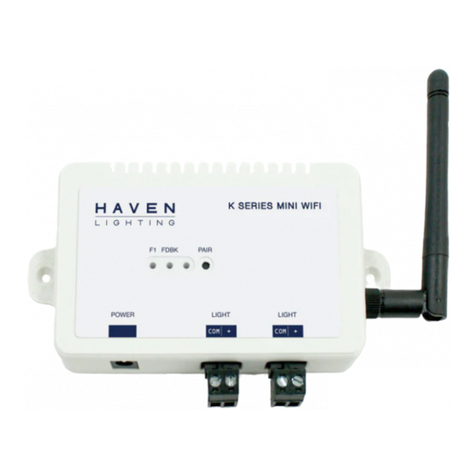CHD Elektroservis CR78-PGM User manual

CR78
CR78CR78
CR78-
--
-PGM
PGMPGM
PGM
Controller & Programmer for
Controller & Programmer forController & Programmer for
Controller & Programmer for
Roland CR
Roland CRRoland CR
Roland CR-
--
-78
7878
78
-
--
- CompuRhythm
CompuRhythmCompuRhythm
CompuRhythm
Model 8
Model 8Model 8
Model 8-
--
-452 Version 3.0
452 Version 3.0452 Version 3.0
452 Version 3.0
Owner’s Manual
Owner’s ManualOwner’s Manual
Owner’s Manual
© 2020 CHD Elektroservis
© 2020 CHD Elektroservis© 2020 CHD Elektroservis
© 2020 CHD Elektroservis

Roland CR
Roland CRRoland CR
Roland CR-
--
-78 Controller & Programmer
78 Controller & Programmer78 Controller & Programmer
78 Controller & Programmer
CR78
CR78 CR78
CR78-
--
-PGM
PGMPGM
PGM
Owner’s Manual
Owner’s ManualOwner’s Manual
Owner’s Manual
8
88
8-
--
-452 / v. 3.00
452 / v. 3.00452 / v. 3.00
452 / v. 3.00
Copyright © 2020 CHD Elektroservis. All rights reserved.
No part of this publication may be reproduced in any form without the written permission of CHD Elektroservis.
2
2
2
2
Contents Page
1
11
1
CONTROLLER DESCRIPTION
CONTROLLER DESCRIPTIONCONTROLLER DESCRIPTION
CONTROLLER DESCRIPTION................................
................................................................
................................................................
................................................................
................................................................
................................................................
.............................................................
..........................................................
............................. 3
33
3
2
22
2
CONTROLLER CONNECTION
CONTROLLER CONNECTIONCONTROLLER CONNECTION
CONTROLLER CONNECTION................................
................................................................
................................................................
................................................................
................................................................
................................................................
.............................................................
..........................................................
............................. 4
44
4
3
33
3
CONTROLLER OPERATION
CONTROLLER OPERATIONCONTROLLER OPERATION
CONTROLLER OPERATION................................
................................................................
................................................................
................................................................
................................................................
................................................................
...............................................................
..............................................................
............................... 5
55
5
3.1
WORKING MODE SELECTION .......................................................................................................................... 5
4
44
4
"PLAY" WORKING MODE
"PLAY" WORKING MODE"PLAY" WORKING MODE
"PLAY" WORKING MODE................................
................................................................
................................................................
................................................................
................................................................
................................................................
................................................................
................................................................
.................................
...5
55
5
4.1
SELECTION OF SYNCHRONIZATION SOURCE ...................................................................................................... 5
4.1.1
MANUAL SYNCHRONIZATION.......................................................................................................................... 5
4.1.2
SYNCHRONIZATION WITH MIDI CLOCK............................................................................................................. 6
4.1.3
SYNCHRONIZATION WITH DIN-SYNC CLOCK ...................................................................................................... 6
5
55
5
"PGM" WORKING MODE
"PGM" WORKING MODE"PGM" WORKING MODE
"PGM" WORKING MODE................................
................................................................
................................................................
................................................................
................................................................
................................................................
................................................................
................................................................
.................................
...7
77
7
5.1
PROGRAMMING MODE ON CR-78 ................................................................................................................... 8
5.2
SEQUENCE OF "STEP BY STEP" PROGRAMMING................................................................................................. 8
5.3
SEQUENCE OF PROGRAMMING IN REAL TIME................................................................................................. 10
6
66
6
SPECIAL WORKING MODES
SPECIAL WORKING MODESSPECIAL WORKING MODES
SPECIAL WORKING MODES................................
................................................................
................................................................
................................................................
................................................................
................................................................
............................................................
........................................................
............................ 10
1010
10
6.1
FIRMWARE VERSION DISPLAYING.................................................................................................................. 10
6.2
DEVICE ADJUSTMENT .................................................................................................................................. 11
6.2.1
SETTING OF START / STOP PULSE LENGTH....................................................................................................... 11
6.2.2
SETTING OF WRITE PULSE LENGTH ................................................................................................................ 11
6.2.3
SETTING OF CLOCK PULSE LENGTH ................................................................................................................ 11
6.2.4
SETTING OF PROGRAMMING CYCLE LENGTH................................................................................................... 11
6.3
INTERNAL MEMORY INITIALIZATION.............................................................................................................. 12
6.4
ERROR STATUS INDICATION.......................................................................................................................... 12
6.5
HARDWARE TESTS....................................................................................................................................... 12
6.5.1
TEST OF DISPLAY......................................................................................................................................... 12
6.5.2
TEST OF BUTTONS....................................................................................................................................... 12
6.5.3
TEST OF SWITCHES...................................................................................................................................... 13
6.5.4
TEST OF DIN-IN INPUT.................................................................................................................................. 13
6.5.5
TEST OF MIDI-IN INPUT................................................................................................................................ 13
6.5.6
TEST OF EXT-CLK OUTPUT............................................................................................................................. 13
6.5.7
TEST OF WRITE OUTPUT............................................................................................................................... 14
6.5.8
TEST OF START / STOP OUTPUT..................................................................................................................... 14
6.5.9
TEST OF MEMORY ....................................................................................................................................... 14
6.5.10
END OF TESTS............................................................................................................................................. 15
7
77
7
TECHNICA
TECHNICATECHNICA
TECHNICAL SPECIFICATION
L SPECIFICATIONL SPECIFICATION
L SPECIFICATION................................
................................................................
................................................................
................................................................
................................................................
................................................................
............................................................
........................................................
............................ 15
1515
15
8
88
8
WARRANTY CONDITIONS
WARRANTY CONDITIONSWARRANTY CONDITIONS
WARRANTY CONDITIONS ................................
................................................................
................................................................
................................................................
................................................................
................................................................
..............................................................
............................................................
.............................. 16
1616
16

Roland CR
Roland CRRoland CR
Roland CR-
--
-78 Controller & Programmer
78 Controller & Programmer78 Controller & Programmer
78 Controller & Programmer
CR78
CR78 CR78
CR78-
--
-PGM
PGMPGM
PGM
Owner’s Manual
Owner’s ManualOwner’s Manual
Owner’s Manual
8
88
8-
--
-452 / v. 3.00
452 / v. 3.00452 / v. 3.00
452 / v. 3.00
Copyright © 2020 CHD Elektroservis. All rights reserved.
No part of this publication may be reproduced in any form without the written permission of CHD Elektroservis.
3
3
3
3
1
11
1
CONTROLLER DESCRIPTION
CONTROLLER DESCRIPTIONCONTROLLER DESCRIPTION
CONTROLLER DESCRIPTION
CR78-PGM is programmer and controller for Roland CR-78 drum-machine. With help of it, CR-78 can be
programmed very easy (by similar way as with original Roland WS-1 programmer). More over, CR78-PGM
enables to control CR-78 during playback manually or via MIDI or DIN-SYNC buses.
Fig. 1
Fig. 1 Fig. 1
Fig. 1 –
––
– Panels of the device
Panels of the device Panels of the device
Panels of the device
Rear panel
Rear panelRear panel
Rear panel
Top p
Top pTop p
Top panel
anelanel
anel
Power supply connector DC Display
START/STOP signal output Synchronization selector – SYNC switch
WRITE signal output Working mode selector – MODE switch
CLOCK signal output PLAY / WRITE INSTRUMENT button
DIN-SYNC bus input START-STOP / NEXT button
MIDI bus input DECREMENT button
LCD contrast setting INCREMENT button

Roland CR
Roland CRRoland CR
Roland CR-
--
-78 Controller & Programmer
78 Controller & Programmer78 Controller & Programmer
78 Controller & Programmer
CR78
CR78 CR78
CR78-
--
-PGM
PGMPGM
PGM
Owner’s Manual
Owner’s ManualOwner’s Manual
Owner’s Manual
8
88
8-
--
-452 / v. 3.00
452 / v. 3.00452 / v. 3.00
452 / v. 3.00
Copyright © 2020 CHD Elektroservis. All rights reserved.
No part of this publication may be reproduced in any form without the written permission of CHD Elektroservis.
4
44
4
2
22
2
CONTROLLER CONNECTION
CONTROLLER CONNECTIONCONTROLLER CONNECTION
CONTROLLER CONNECTION
Figure 2 shows complete connection of the controller into the system. Schematics of used cables are shown in
figure 3.
If synchronization with MIDI and/or DIN-SYNC bus is not necessary, corresponding interconnecting cable(s)
remain unused.
Fig. 2
Fig. 2 Fig. 2
Fig. 2 –
––
– Connection of the device
Connection of the device Connection of the device
Connection of the device
Fig. 3
Fig. 3 Fig. 3
Fig. 3 –
––
– Cables for connection
Cables for connection Cables for connection
Cables for connection
Fig. 4
Fig. 4 Fig. 4
Fig. 4 –
––
– Power supply adapter
Power supply adapter Power supply adapter
Power supply adapter
The device is powered from external supply adapter. DC voltage from the
adapter is connected to DC power supply connector . It is standard
coaxial connector (diameter 5,5 / 2,1 mm) – so called barrel type. External
power supply unit must be able to provide at least 200 mA at 8 - 15 volts.
The DC voltage needn’t to be stabilized. It means that most of universal
PSU can be used. No special adapter is necessary.
The positive pole of supply voltage must be on inner pin, the negative on the external pin of the connector –
see figure 4. The polarity is also depicted on panel of the device. The device has built-in reverse polarity
protection. Incorrect polarity cause no damage, however the device will not work in such case.
Remark:
Remark:Remark:
Remark: The power supply adapter is not included in the product delivery!

Roland CR
Roland CRRoland CR
Roland CR-
--
-78 Controller & Programmer
78 Controller & Programmer78 Controller & Programmer
78 Controller & Programmer
CR78
CR78 CR78
CR78-
--
-PGM
PGMPGM
PGM
Owner’s Manual
Owner’s ManualOwner’s Manual
Owner’s Manual
8
88
8-
--
-452 / v. 3.00
452 / v. 3.00452 / v. 3.00
452 / v. 3.00
Copyright © 2020 CHD Elektroservis. All rights reserved.
No part of this publication may be reproduced in any form without the written permission of CHD Elektroservis.
5
5
5
5
3
33
3
CONTROLLER OPERATION
CONTROLLER OPERATIONCONTROLLER OPERATION
CONTROLLER OPERATION
The device is not equipped with power switch. It works immediately after a supply adapter is connected.
After connection with CR-78 instrument, it is necessary to turn on the controller first (to connect
power supply adapter to the controller). Now reset sequence will begin. During reset, display
shows name of the device. After the reset sequence, CR-78 can be turned on yet (by “POWER“
switch on the instrument’s panel).
All information about actual status of the device are displayed on display during operation. Contrast of the
display viewing can be set with LCD-CONTR knob on rear panel.
3.1
3.13.1
3.1
WORKING MODE SELECTION
WORKING MODE SELECTIONWORKING MODE SELECTION
WORKING MODE SELECTION
Requested working mode of the device can be selected by MODE switch – “PLAY“ for playback (lower
position) or “PGM“ for programming of user memories of CR-78 (upper position of the switch lever).
"PLAY"
"PGM"
4
44
4
"PLAY" WORKING MODE
"PLAY" WORKING MODE"PLAY" WORKING MODE
"PLAY" WORKING MODE
After PLAY mode is selected by MODE switch, display shows info about working mode
change shortly and then the controller comes into playback mode.
In PLAY mode, the device controls tempo of CR-78 instrument and its START/STOP function. Method of control
depends on selected synchronization source selected by SYNC switch.
Remark:
Remark:Remark:
Remark: The “TEMPO“ knob on CR-78’s panel is not functional if a cable is plugged in the “EXT CLOCK”
connector on rear panel of CR78.
4.1
4.14.1
4.1
SELECTION OF SYNCHRONIZATION SOURCE
SELECTION OF SYNCHRONIZATION SOURCESELECTION OF SYNCHRONIZATION SOURCE
SELECTION OF SYNCHRONIZATION SOURCE
CR-78 synchronization source can be selected by three-position SYNC switch. It is possible to select these
sources: Manual control with help of controllers on device's panel (upper position of SYNC switch),
synchronization with MIDI bus (middle position of SYNC switch) or synchronization with DIN-SYNC bus (lower
position of SYNC switch).
4.1.1
4.1.14.1.1
4.1.1
MANUAL SYNCHRONIZATION
MANUAL SYNCHRONIZATIONMANUAL SYNCHRONIZATION
MANUAL SYNCHRONIZATION
In manual (internal) synchronization mode, “INT“ and “START [ ]“ / “STOP [ ]“
symbols are shown in upper row of display , actual tempo is shown in lower row.
Playback tempo is controlled with TEMPO INCREMENT / DECREMENT
buttons. Range of the tempo can be from 25 to 500 BPM (Beats per Minute).

Roland CR
Roland CRRoland CR
Roland CR-
--
-78 Controller & Programmer
78 Controller & Programmer78 Controller & Programmer
78 Controller & Programmer
CR78
CR78 CR78
CR78-
--
-PGM
PGMPGM
PGM
Owner’s Manual
Owner’s ManualOwner’s Manual
Owner’s Manual
8
88
8-
--
-452 / v. 3.00
452 / v. 3.00452 / v. 3.00
452 / v. 3.00
Copyright © 2020 CHD Elektroservis. All rights reserved.
No part of this publication may be reproduced in any form without the written permission of CHD Elektroservis.
6
6
6
6
Tempo is increased / decreased in ±1 steps if INCREMENT / DECREMENT buttons are pressed shortly.
If TEMPO INCREMENT / DECREMENT buttons are pressed longer time, the tempo is increased /
decreased continuously during the buttons are held.
Playback can be started and stopped with help of START / STOP button. Actual status is shown on the right
in upper row of display . Round symbol [ ] represents STOP status; arrow symbol [ ] represents START
status.
With help of PLAY INSTR button, it is possible to run up a sound generator of CR-78 which is
selected with “INSTRUMENT SELECTOR“ rotary selector on CR-78 panel. After the PLAY INSTR
button is pressed, display shows info about an instrument launching [ ] for a moment.
Remark:
Remark:Remark:
Remark: A drum instrument can be running by this way only when CR-78 is just playing a rhythm. It is impossible
when playback is stopped.
4.1.2
4.1.24.1.2
4.1.2
SYNCHRONIZATION WITH MIDI CLOCK
SYNCHRONIZATION WITH MIDI CLOCKSYNCHRONIZATION WITH MIDI CLOCK
SYNCHRONIZATION WITH MIDI CLOCK
In MIDI synchronization mode, the controller receives commands from MIDI-IN
input. Only common system commands CLOCK (F8h), START (FAh), CONTINUE (FBh)
and STOP (FCh) are acceptable. All others MIDI commands are ignored – they are
not recognized by the controller. “MID” and “START“ / “STOP“ symbols are shown in upper row of display .
Round [ ] represents STOP status, arrow [ ] represents START status.
Actual tempo of playback derived from MIDI CLOCK commands is displayed in
upper row of display in BPM (Beats per Minute) form. Info “Slow” is displayed if
the tempo is lower than 0,6 BPM or if no MIDI CLOCK commands are received. Info
“Fast” is displayed if the tempo is higher than 999,9 BPM.
With help of INCREMENT and DECREMENT buttons, normal [ ] or
doubled [ ] speed of playback tempo can be chosen.
With help of PLAY INSTR button, it is possible to run up a sound generator of CR-78 which is
selected with “INSTRUMENT SELECTOR“ rotary selector on CR-78 panel. After the PLAY INSTR
button is pressed, display shows info about an instrument launching [ ] for a moment.
Remark:
Remark:Remark:
Remark: A drum instrument can be running by this way only when CR-78 is just playing a rhythm. It is impossible
when playback is stopped.
START/STOP button is not used in MIDI synchronization mode at all.
4.1.3
4.1.34.1.3
4.1.3
SYNCHRONIZATION WITH DIN
SYNCHRONIZATION WITH DINSYNCHRONIZATION WITH DIN
SYNCHRONIZATION WITH DIN-
--
-SYNC
SYNC SYNC
SYNC CLOCK
CLOCKCLOCK
CLOCK
In DIN-SYNC synchronization mode, the controller receives
CLOCK and RUN signals
from DIN input. Signals RESET and FILL are ignored – they are not recognized by
the controller. “DIN” and “START“ / “STOP“ symbols are shown in upper row of
display . Round [ ] represents STOP status, arrow [ ] represents START status.
Actual tempo of playback derived from DIN-SYNC CLOCK signal is displayed in
upper row of display in BPM (Beats per Minute) form. Info “Slow” is displayed if
the tempo is lower than 0,6 BPM or if no CLOCK signal is present. Info “Fast” is
displayed if the tempo is higher than 999,9 BPM.
TEMPO INCREMENT / DECREMENT buttons select type of
DIN-SYNC bus in accordance to number of clock pulses per quarter
note (PPQN). DIN-24 (24 PPQN) type is default setting. This type
complies with most of devices equipped with DIN-SYNC output. For the others, DIN-12 (12 PPQN) or DIN-48 (48
PPQN) types can be selected.

Roland CR
Roland CRRoland CR
Roland CR-
--
-78 Controller & Programmer
78 Controller & Programmer78 Controller & Programmer
78 Controller & Programmer
CR78
CR78 CR78
CR78-
--
-PGM
PGMPGM
PGM
Owner’s Manual
Owner’s ManualOwner’s Manual
Owner’s Manual
8
88
8-
--
-452 / v. 3.00
452 / v. 3.00452 / v. 3.00
452 / v. 3.00
Copyright © 2020 CHD Elektroservis. All rights reserved.
No part of this publication may be reproduced in any form without the written permission of CHD Elektroservis.
7
7
7
7
Remark:
Remark:Remark:
Remark: Count of clock pulses transmitted from a connected device must be found in documentation of this
device and type of DIN-SYNC bus must be set in accordance with it.
With help of PLAY INSTR button, it is possible to run up a sound generator of CR-78 which is
selected with “INSTRUMENT SELECTOR“ rotary selector on CR-78 panel. After the PLAY INSTR
button is pressed, display shows info about an instrument launching [ ] for a moment.
Remark:
Remark:Remark:
Remark: A drum instrument can be running by this way only when CR-78 is just playing a rhythm. It is impossible
when playback is stopped.
START/STOP button is not used in DIN-SYNC synchronization mode at all.
5
55
5
"PGM" WORKING MODE
"PGM" WORKING MODE"PGM" WORKING MODE
"PGM" WORKING MODE
Programming (PGM) mode of the device enables very easy programming of CR-78’s user
memories (patterns). After PGM mode is selected (with MODE switch), display shows info
about working mode change shortly and then the controller comes into programming mode.
After entering into programming mode, invitation for setting of CR-78 is shown on display .
Valid setting of CR-78 must be confirmed by NEXT button pressing. Now programming
procedure begins.
Length of programming step is displayed in upper row and actual position of programming is
displayed in lower row of display . Requested length of programming step (length of Beat) can
be selected with BEAT INCREMENT / DECREMENT buttons. Just selected length of
programming step is shown on display . Available Beats and their lengths in clock pulses (ticks) are listed in
table below:
Table 1
Table 1 Table 1
Table 1 –
––
– Lengths of available Beats
Lengths of available Beats Lengths of available Beats
Lengths of available Beats
Beat
BeatBeat
Beat
1/32
3
1/16
3
1/16 1/8
3
1/8 1/4
3
1/4 1/2
3
1/2 1/1
Length [
Length [Length [
Length [Clock t
Clock tClock t
Clock ticks]
icks]icks]
icks]
1 2 3 4 6 8 12 16 24 48
Actual position is displayed in M:B:T (Measure : Beat : Tick) form. Starting position (after PGM mode is selected)
is always 1:01:00.
Pressing of WRITE INSTR button inserts drum instrument selected with “INSTRUMENT
SELECTOR“ selector on CR-78 panel onto actual position. Actual position is not changed when an
instrument is inserted so it is possible to insert more instruments (up to 4, ACCENT include) onto
the same position. It can be done if next instrument is selected with “INSTRUMENT SELECTOR“ selector on CR-
78 panel and then WRITE INSTR button is pressed repeatedly. Symbol of note [ ] is displayed in upper row
of display every time when the button is pressed. The controller doesn’t react during the symbol is displayed
– it is necessary to wait for blackout of the symbol before next pressing of a button.
Actual position is shifted one step ahead if NEXT button is pressed. Length of the step is
equal to number of clock pulses (Ticks) corresponded to duration of selected Beat (with BEAT
INCREMENT / DECREMENT buttons – see table 1). After the position is shifted, new
actual position is shown in lower row of display . Repeated pressing of NEXT button enables sequent
stepping – it is equivalent to insertion of a pause. Symbol of arrow [ ] is displayed in lower row of display
every time when the button is pressed. The controller doesn’t react during the symbol is displayed – it is
necessary to wait for blackout of the symbol before next pressing of a next button.

Roland CR
Roland CRRoland CR
Roland CR-
--
-78 Controller & Programmer
78 Controller & Programmer78 Controller & Programmer
78 Controller & Programmer
CR78
CR78 CR78
CR78-
--
-PGM
PGMPGM
PGM
Owner’s Manual
Owner’s ManualOwner’s Manual
Owner’s Manual
8
88
8-
--
-452 / v. 3.00
452 / v. 3.00452 / v. 3.00
452 / v. 3.00
Copyright © 2020 CHD Elektroservis. All rights reserved.
No part of this publication may be reproduced in any form without the written permission of CHD Elektroservis.
8
8
8
8
5.1
5.15.1
5.1
PROGRAMMING MODE ON CR
PROGRAMMING MODE ON CRPROGRAMMING MODE ON CR
PROGRAMMING MODE ON CR-
--
-78
7878
78
It is necessary to turn CR-78 to programming mode before start of CR-78’s memories programming. Some
controllers on CR-78’s panel must be set to following positions:
• Requested memory must be selected with “PROGRAM RHYTHM“ selector. The memory can be erased before
programming if necessary.
• “PROGRAM SWITCH“ must be in “MEMORY“ position.
• Requested (programmed) drum instrument must be selected with “INSTRUMENT SELECTOR“ rotary selector.
Note that all four user memories of CR-78 have fix length of two four-quarter measures. It is 96 clock pulses
(Ticks) – CR-78 uses 12 PPQN (Pulses per Quarter Note) resolution. When length of memory is exceeded during
programming procedure, clock pulses counting starts from 1:01:00 position repeatedly. This corresponds to
method of position indication on display .
5.2
5.25.2
5.2
SEQUENCE OF "STEP BY ST
SEQUENCE OF "STEP BY STSEQUENCE OF "STEP BY ST
SEQUENCE OF "STEP BY STEP" PROGRAMMING
EP" PROGRAMMINGEP" PROGRAMMING
EP" PROGRAMMING
Example:
Example:Example:
Example: Store rhythm on figure 5 into user memory of CR-78.
Fig. 5
Fig. 5 Fig. 5
Fig. 5 –
––
– Example of simple rhythm
Example of simple rhythm Example of simple rhythm
Example of simple rhythm
Sequence:
Sequence:Sequence:
Sequence:
1) Set the controller to programming mode (MODE switch to “PGM“ position) and wait for display of
“Prepare CR-78 !“ invitation.
2) Select requested memory of CR-78 (“PROGRAM RHYTHM“ selector onCR-78 panel).
3) Erase selected memory of CR-78: set “PROGRAM SWITCH“ switch (on CR-78 panel) to “ALL“ position and
press “CLEAR“ button (on CR-78 panel).
4) Set “PROGRAM SWITCH“ switch (on CR-78 panel) to “MEMORY“ position.
5) Confirm valid setting of CR-78 by NEXT button pressing.
6) Now the programming procedure begins. First note of programmed rhythm is a quarter note – set length of
Beat to “1/4“ (with BEAT INCREMENT / DECREMENT buttons). Display shows 1:01:00 position (it is
first quarter of first measure).
7) Select “BD” with “INSTRUMENT SELECTOR“ (on CR-78 panel) and store the instrument into CR-78’s memory
with WRITE INSTR button pressing (on the controller).
8) Select “CY” with “INSTRUMENT SELECTOR“ (on CR-78 panel) and store the instrument into CR-78’s memory
with WRITE INSTR button pressing (on the controller).
9) Press NEXT button (on the controller) for continuing to next note. Display will show 1:02:00 position
(second quarter of first measure).
10) Select “CH” with “INSTRUMENT SELECTOR“ (on CR-78 panel) and store the instrument into CR-78’s memory
with WRITE INSTR button pressing (on the controller).
11) Press NEXT button (on the controller) for continuing to next note. Display will show 1:03:00 position
(third quarter of first measure).
12) Store “CH” instrument (it stays selected from previous step) with WRITE INSTR button pressing (on the
controller).

Roland CR
Roland CRRoland CR
Roland CR-
--
-78 Controller & Programmer
78 Controller & Programmer78 Controller & Programmer
78 Controller & Programmer
CR78
CR78 CR78
CR78-
--
-PGM
PGMPGM
PGM
Owner’s Manual
Owner’s ManualOwner’s Manual
Owner’s Manual
8
88
8-
--
-452 / v. 3.00
452 / v. 3.00452 / v. 3.00
452 / v. 3.00
Copyright © 2020 CHD Elektroservis. All rights reserved.
No part of this publication may be reproduced in any form without the written permission of CHD Elektroservis.
9
9
9
9
13) Select “SD” with “INSTRUMENT SELECTOR“ (on CR-78 panel) and store the instrument into CR-78’s memory
with WRITE INSTR button pressing (on the controller).
14) Press NEXT button (on the controller) for continuing to next note. Display will show 1:04:00 position
(fourth quarter of first measure).
15) Next notes are 8
th
- set length of Beat to “1/8“ (with BEAT INCREMENT / DECREMENT buttons).
Display will show 1:07:00 position (seventh 8
th
of first measure).
16) Select “CH” with “INSTRUMENT SELECTOR“ (on CR-78 panel) and store the instrument into CR-78’s memory
with WRITE INSTR button pressing (on the controller).
17) Press NEXT button (on the controller) for continuing to next note. Display will show 1:08:00 position
(eighth 8
th
of first measure).
18) Select “BD” with “INSTRUMENT SELECTOR“ (on CR-78 panel) and store the instrument into CR-78’s memory
with WRITE INSTR button pressing (on the controller).
19) Press NEXT button (on the controller) for continuing to next note. Display will show 2:01:00 position
(first 8
th
of second measure).
20) Next notes are quarters again - set length of Beat to “1/4“ (with BEAT INCREMENT / DECREMENT
buttons). Display will show 2:01:00 position (first quarter of second measure).
21) Store “BD” instrument (it stays selected from previous step) with WRITE INSTR button pressing (on the
controller).
22) Select “CH” with “INSTRUMENT SELECTOR“ (on CR-78 panel) and store the instrument into CR-78’s memory
with WRITE INSTR button pressing (on the controller).
23) Press NEXT button (on the controller) for continuing to next note. Display will show 2:02:00 position
(second quarter of second measure).
24) Store “CH” instrument (it stays selected from previous step) with WRITE INSTR button pressing (on the
controller).
25) Press NEXT button (on the controller) for continuing to next note. Display will show 2:03:00 position
(third quarter of second measure).
26) Store “CH” instrument (it stays selected from previous step) with WRITE INSTR button pressing (on the
controller).
27) Select “SD” with “INSTRUMENT SELECTOR“ (on CR-78 panel) and store the instrument into CR-78’s memory
with WRITE INSTR button pressing (on the controller).
28) Press NEXT button (on the controller) for continuing to next note. Display will show 2:04:00 position
(fourth quarter of second measure).
29) Select “CH” with “INSTRUMENT SELECTOR“ (on CR-78 panel) and store the instrument into CR-78’s memory
with WRITE INSTR button pressing (on the controller).
30) Now programming of CR-78 memory is finished. Turn “PROGRAM SWITCH“ switch on CR-78 panel to
“PLAY“ position.
31) Turn the controller to playback mode (MODE switch to “PLAY“ position).
32) CR-78 will replay newly programmed rhythm during next start of playback.
Any other rhythm can be programmed by similar way. The only limitation is, the shortest beat is 32
th
triplet and
32
th
note isn’t accessible. This limitation is given by CR-78 construction.
In some cases, this limitation can be get out by doubling of tempo during playback. It is enabled if
synchronization is INT or DIN-24 or DIN-48. But length of user memory is contracted to only one measure in
that case.

Roland CR
Roland CRRoland CR
Roland CR-
--
-78 Controller & Programmer
78 Controller & Programmer78 Controller & Programmer
78 Controller & Programmer
CR78
CR78 CR78
CR78-
--
-PGM
PGMPGM
PGM
Owner’s Manual
Owner’s ManualOwner’s Manual
Owner’s Manual
8
88
8-
--
-452 / v. 3.00
452 / v. 3.00452 / v. 3.00
452 / v. 3.00
Copyright © 2020 CHD Elektroservis. All rights reserved.
No part of this publication may be reproduced in any form without the written permission of CHD Elektroservis.
10
1010
10
Example:
Example:Example:
Example: Store rhythm on pic. 6 into user memory of CR-78.
Fig. 6
Fig. 6 Fig. 6
Fig. 6 –
––
– Example of more difficult rhythm
Example of more difficult rhythm Example of more difficult rhythm
Example of more difficult rhythm
Sequence:
Sequence:Sequence:
Sequence:
First, rewrite the rhythm for double-speed playback:
This rhythm can be programmed to CR-78 memory by method described above.
Set double tempo after the controller is turned back to playback mode:
• For internal synchronization (INT), set double tempo with BEAT INCREMENT / DECREMENT buttons
directly.
• For DIN-SYNC synchronization (DINxx), set half resolution of clock pulses than it is really transmitted from
clock source (set DIN-12 for synchronization source with PPQN = 24, set DIN-24 for source with PPQN = 48).
5.3
5.35.3
5.3
SEQUENCE OF PROGRAMMING IN REAL TIME
SEQUENCE OF PROGRAMMING IN REAL TIMESEQUENCE OF PROGRAMMING IN REAL TIME
SEQUENCE OF PROGRAMMING IN REAL TIME
The controller enables real time programming of CR-78’s rhythms too. This programming method is described
in owner’s manual of CR-78 (in THE OPERATION OF THE PROGRAMMER SECTION chapter). The only difference
is that manual switch TS-1 described in the user manual is not used – it is replaced by WRITE INSTR button
on CR78-PGM controller.
The controller stays in playback working mode (PLAY). After setting of CR-78 (see above), tempo generator is
turned on with help of START / STOP button of the controller (if internal synchronization is selected) or
from MIDI or DIN-SYNC device (if MIDI or DIN synchronization is selected). Now instrument selected with
“INSTRUMENT SELECTOR“ on CR-78’s panel is written into CR-78’s memory every time PLAY INSTR button
on CR78-PGM controller is pressed.
6
66
6
SPECIAL WORKING MODES
SPECIAL WORKING MODESSPECIAL WORKING MODES
SPECIAL WORKING MODES
In addition to the standard operating modes, the device allows some other functions described below.
6.1
6.16.1
6.1
FIRMWARE VERSION DISPLAYING
FIRMWARE VERSION DISPLAYINGFIRMWARE VERSION DISPLAYING
FIRMWARE VERSION DISPLAYING
If you need to know what version of firmware is installed in your CR78-PGM, execute this sequence:
• Press the INCREMENT button and hold it.
• Only then switch the device on (connect power supply adapter to the device).
• Display will show the number and date of installed firmware:
Now, the INCREMENT button can be released.
• After about 3 seconds, the device comes to normal working mode automatically.

Roland CR
Roland CRRoland CR
Roland CR-
--
-78 Controller & Programmer
78 Controller & Programmer78 Controller & Programmer
78 Controller & Programmer
CR78
CR78 CR78
CR78-
--
-PGM
PGMPGM
PGM
Owner’s Manual
Owner’s ManualOwner’s Manual
Owner’s Manual
8
88
8-
--
-452 / v. 3.00
452 / v. 3.00452 / v. 3.00
452 / v. 3.00
Copyright © 2020 CHD Elektroservis. All rights reserved.
No part of this publication may be reproduced in any form without the written permission of CHD Elektroservis.
11
1111
11
6.2
6.26.2
6.2
DEVICE ADJUSTMENT
DEVICE ADJUSTMENTDEVICE ADJUSTMENT
DEVICE ADJUSTMENT
The device enables user adjustment of length of pulses generated on START/STOP , WRITE and EXT CLK
outputs. Sometimes this can be necessary – if the CR-78 instrument doesn’t react correctly to Start / Stop
and Write commands or when programming steps in PGM mode or running in PLAY mode are irregular.
This is mostly caused by input circuits of the CR-78. The instrument is very old and some components alter their
parameters over time – especially electrolytic capacitors. In that case, longer START/STOP, WRITE and / or EXT
CLK pulses have to be used for such instrument.
To entry into programming mode, press WRITE INSTR button and hold it. Only then switch the device on
(connect power supply adapter to the device). Display shows first parameter value. Now, the WRITE INSTR
button can be released.
Remark:
Remark:Remark:
Remark: Adjustment of the pulse lengths is available only in versions of operating system 3.00 and higher. So
please check version of your firmware (see chapter 6.1) before you will try to change lengths of the pulses.
6.2.1
6.2.16.2.1
6.2.1
SETTING OF START / STOP PULSE LENGTH
SETTING OF START / STOP PULSE LENGTHSETTING OF START / STOP PULSE LENGTH
SETTING OF START / STOP PULSE LENGTH
Display shows actual length of START / STOP pulse generated by the controller. New length can be adjusted by
INCREMENT / DECREMENT buttons. Available values are from 30 to 130 ms:
For continue to next parameter, NEXT button must be pressed.
6.2.2
6.2.26.2.2
6.2.2
SETTING OF
SETTING OFSETTING OF
SETTING OF WRITE PULSE LENGTH
WRITE PULSE LENGTH WRITE PULSE LENGTH
WRITE PULSE LENGTH
Display shows actual length of WRITE pulse generated by the controller. New length can be adjusted by
INCREMENT / DECREMENT buttons. Available values are from 10 to 50 ms:
For continue to next parameter, NEXT button must be pressed.
6.2.3
6.2.36.2.3
6.2.3
SETTING OF CLOCK PULSE LENGTH
SETTING OF CLOCK PULSE LENGTHSETTING OF CLOCK PULSE LENGTH
SETTING OF CLOCK PULSE LENGTH
Display shows actual length of CLOCK pulse generated by the controller. New length can be adjusted by
INCREMENT / DECREMENT buttons. Available values are from 2 to 12 ms:
For continue to next parameter, NEXT button must be pressed.
6.2.4
6.2.46.2.4
6.2.4
SETTING OF PROGRAMMING CYCLE LENGTH
SETTING OF PROGRAMMING CYCLE LENGTHSETTING OF PROGRAMMING CYCLE LENGTH
SETTING OF PROGRAMMING CYCLE LENGTH
Display shows actual length of programming cycle executed in programming mode of the controller. New length
can be adjusted by INCREMENT / DECREMENT buttons. Available values are from 4 to 24 ms:
This is the last parameter. The device comes to normal working mode after NEXT button is pressed.

Roland CR
Roland CRRoland CR
Roland CR-
--
-78 Controller & Programmer
78 Controller & Programmer78 Controller & Programmer
78 Controller & Programmer
CR78
CR78 CR78
CR78-
--
-PGM
PGMPGM
PGM
Owner’s Manual
Owner’s ManualOwner’s Manual
Owner’s Manual
8
88
8-
--
-452 / v. 3.00
452 / v. 3.00452 / v. 3.00
452 / v. 3.00
Copyright © 2020 CHD Elektroservis. All rights reserved.
No part of this publication may be reproduced in any form without the written permission of CHD Elektroservis.
12
1212
12
6.3
6.36.3
6.3
INTERNAL MEMORY INITIALIZATION
INTERNAL MEMORY INITIALIZATIONINTERNAL MEMORY INITIALIZATION
INTERNAL MEMORY INITIALIZATION
The device enables to set all parameters in its internal memory to default values – i.e. to factory setting. To
launch the factory setting process, execute this sequence:
• Press the DECREMENT button and hold it.
• Only then switch the device on (connect power supply adapter to the device).
• Display will show message:
Now, the DECREMENT button can be released.
• During a few seconds, the memory is initialized and the device comes to normal working mode automatically.
6.4
6.46.4
6.4
ERROR STATUS INDICATION
ERROR STATUS INDICATIONERROR STATUS INDICATION
ERROR STATUS INDICATION
If any error occurs during access to the device’s internal memory (see chapters 6.2 and 6.3), the device stops all
activities and an error message (with the error type) is shown on display
In that case, you have to switch the device off and then on again after a moment. If the error persists, the
device must be repaired in specialized workshop.
6.5
6.56.5
6.5
HARDWARE TESTS
HARDWARE TESTSHARDWARE TESTS
HARDWARE TESTS
Operating system of the device contains routines for checking of functionality of own hardware circuits. The
tests can be processed if the device does not work properly in harness with CR-78 instrument.
To entry into testing mode, press NEXT button and hold it. Only then switch the device on (connect power
supply adapter to the device). All dots are displayed on device’s display then. Now, the NEXT button can
be released.
6.5.1
6.5.16.5.1
6.5.1
TEST OF DISPLAY
TEST OF DISPLAYTEST OF DISPLAY
TEST OF DISPLAY
Test of display is launched automatically immediately after entering into testing mode. All dots or blank area
are displayed alternately on all positions of the display (all dots luminous or all dots hidden):
Also functionality of LCD contrast regulator (LCD-CONTR ) can be tested during this test.
Continue to next test occurs automatically after any of buttons on device’s panel is pressed.
6.5.2
6.5.26.5.2
6.5.2
TEST OF BUTTONS
TEST OF BUTTONSTEST OF BUTTONS
TEST OF BUTTONS
Status of each of buttons is displayed as circular symbol on the display. This symbol is blank before a button is
pressed and it will be filled after a button pressing.
W = WRITE / PLAY INSTRUMENT
N = NEXT / START – STOP
I = BEAT / TEMPO INCREMENT
D = BEAT / TEMPO DECREMENT
Continue to next test occurs automatically after all four buttons are pressed.

Roland CR
Roland CRRoland CR
Roland CR-
--
-78 Controller & Programmer
78 Controller & Programmer78 Controller & Programmer
78 Controller & Programmer
CR78
CR78 CR78
CR78-
--
-PGM
PGMPGM
PGM
Owner’s Manual
Owner’s ManualOwner’s Manual
Owner’s Manual
8
88
8-
--
-452 / v. 3.00
452 / v. 3.00452 / v. 3.00
452 / v. 3.00
Copyright © 2020 CHD Elektroservis. All rights reserved.
No part of this publication may be reproduced in any form without the written permission of CHD Elektroservis.
13
1313
13
6.5.3
6.5.36.5.3
6.5.3
TEST OF SWITCHES
TEST OF SWITCHESTEST OF SWITCHES
TEST OF SWITCHES
Status of SYNC and MODE switches is displayed during this test. Actual position of some of switches is
shown on display under abbreviation of corresponding switch:
For continue to next test, NEXT button must be pressed.
6.5.4
6.5.46.5.4
6.5.4
TEST OF DIN
TEST OF DINTEST OF DIN
TEST OF DIN-
--
-IN INPUT
IN INPUTIN INPUT
IN INPUT
Display shows actual status of DIN-SYNC bus signals on DIN-IN input. Symbol “C” is used for Clock signal
and symbol “R“ is used for Run signal (signals Reset and Fill are not used in the controller):
Signals can be incoming to DIN-IN input from any DIN-SYNC transmitter or external source of DC voltage (from 4
to 5 volts) can be used – see picture:
For continue to next test, NEXT button must be pressed.
6.5.5
6.5.56.5.5
6.5.5
TEST OF MIDI
TEST OF MIDITEST OF MIDI
TEST OF MIDI-
--
-IN INPUT
IN INPUTIN INPUT
IN INPUT
Display shows actual status of Transport MIDI commands received from MIDI transmitter on MIDI-IN
input:
Default status (no received MIDI command) is displayed as dashes.
Symbol “CLK” is shown on left side of the display every time when Clock MIDI command
(status byte F8h) is received on MIDI input. The symbol is shown for approx. 0,2 sec.
On right side of the display , symbol of last received Transport
MIDI command is shown. The symbol is “STR“ for START command
(status byte FAh) or “CON“ for CONTINUE command (status byte FBh) or “STP“ for STOP command (status byte
FCh).
For continue to next test, NEXT button must be pressed.
6.5.6
6.5.66.5.6
6.5.6
TEST OF EXT
TEST OF EXTTEST OF EXT
TEST OF EXT-
--
-CLK OUTPUT
CLK OUTPUTCLK OUTPUT
CLK OUTPUT
Status of the output can be set with INCREMENT and DECREMENT buttons. Actual status is shown on
the display simultaneously. +5V voltage level is on EXT-CLOCK output in “ON” status and 0V voltage level
is on the output in “OFF” status:

Roland CR
Roland CRRoland CR
Roland CR-
--
-78 Controller & Programmer
78 Controller & Programmer78 Controller & Programmer
78 Controller & Programmer
CR78
CR78 CR78
CR78-
--
-PGM
PGMPGM
PGM
Owner’s Manual
Owner’s ManualOwner’s Manual
Owner’s Manual
8
88
8-
--
-452 / v. 3.00
452 / v. 3.00452 / v. 3.00
452 / v. 3.00
Copyright © 2020 CHD Elektroservis. All rights reserved.
No part of this publication may be reproduced in any form without the written permission of CHD Elektroservis.
1
4
141
4
14
Status of the output can be checked with DC voltmeter or with help of testing circuit – see picture:
For continue to next test, NEXT button must be pressed.
6.5.7
6.5.76.5.7
6.5.7
TEST OF WRITE OUTPUT
TEST OF WRITE OUTPUTTEST OF WRITE OUTPUT
TEST OF WRITE OUTPUT
Status of the output can be set with INCREMENT and DECREMENT buttons. Actual status is shown on
the display simultaneously. Contacts of WRITE output are opened in ON status and the contacts are
connected in OFF status - the output works as NC type switch:
Status of the output can be checked with short-circuit tester or with help of testing circuit – see picture:
For continue to next test, NEXT button must be pressed.
6.5.8
6.5.86.5.8
6.5.8
TEST OF START / STOP OUTPUT
TEST OF START / STOP OUTPUTTEST OF START / STOP OUTPUT
TEST OF START / STOP OUTPUT
Status of the output can be set with INCREMENT and DECREMENT buttons. Actual status is shown on
the display simultaneously. Contacts of START / STOP output are opened in ON status and the contacts are
connected in OFF status - the output works as NC type switch:
Status of the output can be checked with short-circuit tester or with help of testing circuit – see picture:
For continue, NEXT button must be pressed.
6.5.9
6.5.96.5.9
6.5.9
TEST OF MEMORY
TEST OF MEMORYTEST OF MEMORY
TEST OF MEMORY
The test checks cells of the internal device’s memory. During the test is in progress, display shows message:
If none malfunction of the memory is found, confirmation message is shown on display and continue to next
step occurs automatically:

Roland CR
Roland CRRoland CR
Roland CR-
--
-78 Controller & Programmer
78 Controller & Programmer78 Controller & Programmer
78 Controller & Programmer
CR78
CR78 CR78
CR78-
--
-PGM
PGMPGM
PGM
Owner’s Manual
Owner’s ManualOwner’s Manual
Owner’s Manual
8
88
8-
--
-452 / v. 3.00
452 / v. 3.00452 / v. 3.00
452 / v. 3.00
Copyright © 2020 CHD Elektroservis. All rights reserved.
No part of this publication may be reproduced in any form without the written permission of CHD Elektroservis.
15
1515
15
If a failed cell is detected, Display shows info about the error type and position of the failed cell. In this case,
NEXT button must be pressed for continue to next step:
6.5.10
6.5.106.5.10
6.5.10
END OF TESTS
END OF TESTSEND OF TESTS
END OF TESTS
All available tests are executed now. Display shows info:
For continue, NEXT button must be pressed. Then the device comes to normal working mode.
If no error occurs during testing procedures, the device is fully functional and it should to work with CR-78 drum
machine correctly. If the device doesn’t work with CR-78 in this case, some mistake can be in used
interconnecting cables or in CR-78 drum machine.
If any hardware error occurs during testing procedures, the device must be repaired in specialized workshop.
7
77
7
TECHNICAL SPECIFICATION
TECHNICAL SPECIFICATIONTECHNICAL SPECIFICATION
TECHNICAL SPECIFICATION
Power source :
Power source :Power source :
Power source : external power supply adapter
Supply voltage : 8 V
DC
to 15 V
DC
Current consumption : 200 mA max
EXT
EXTEXT
EXT-
--
-CLOCK output :
CLOCK output :CLOCK output :
CLOCK output : Jack ¼“ socket (TS)
Signal : push-pull mode
Output voltage : 0 V for low level / +5V for high level
Output impedance : 47
WRITE and START/STOP outputs :
WRITE and START/STOP outputs :WRITE and START/STOP outputs :
WRITE and START/STOP outputs : Jack ¼“ socket (TS)
Signal : NC switch mode
Switched voltage : up to +15 V
Output impedance : 47 Ω for closed status / high impedance for open status
DIN
DINDIN
DIN-
--
-SYNC input :
SYNC input :SYNC input :
SYNC input : DIN 41524 (5 pins / 180°) socket (pin Nr. 1: RUN signal, pin Nr. 3:
CLOCK signal, pin Nr. 2: GND, pins Nr. 4 and 5 unused)
Input voltage : 0 to +1,5 V for low level / +2,5 to +10 V for high level
Input impedance : 50 kΩ for V
IN
up to +5 V / 5 kΩ for V
IN
over +5 V
MIDI inp
MIDI inpMIDI inp
MIDI input :
ut :ut :
ut : DIN 41524 (5 pins / 180°) socket (pin Nr. 4: + polarity, pin Nr. 5: –
polarity, pins Nr. 1, 2 and 3 unused)
Connection : standard connection – current loop 5 mA
Electrical design :
Electrical design :Electrical design :
Electrical design : under the regulations of the ČSN EN 60335-1+A55,
ČSN EN 60335-2-45
EMC :
EMC :EMC :
EMC : under the regulations of the ČSN EN 55014, ČSN EN 55020
Operating environment :
Operating environment :Operating environment :
Operating environment : standard indoor - temperature +10 to +35 °C, relative humidity up
to 85 %
INFORMATION FOR USER
INFORMATION FOR USERINFORMATION FOR USER
INFORMATION FOR USERS ON DISPOSAL OF OLD
S ON DISPOSAL OF OLDS ON DISPOSAL OF OLD
S ON DISPOSAL OF OLD EQUIPMENT AND BATTE
EQUIPMENT AND BATTE EQUIPMENT AND BATTE
EQUIPMENT AND BATTERIES
RIESRIES
RIES [EUROPEAN UNION ONLY]
Equipment bearing these symbols should not be disposed as general household waste.
You should look for appropriate recycling facilities and systems for the disposal of these products.
Notice: The sign Pb below the symbol for batteries indicates that this battery contains lead.

Roland CR
Roland CRRoland CR
Roland CR-
--
-78 Controller & Programmer
78 Controller & Programmer78 Controller & Programmer
78 Controller & Programmer
CR78
CR78 CR78
CR78-
--
-PGM
PGMPGM
PGM
Owner’s Manual
Owner’s ManualOwner’s Manual
Owner’s Manual
8
88
8-
--
-452 / v. 3.00
452 / v. 3.00452 / v. 3.00
452 / v. 3.00
Copyright © 2020 CHD Elektroservis. All rights reserved.
No part of this publication may be reproduced in any form without the written permission of CHD Elektroservis.
16
1616
16
8
88
8
WARRANTY CONDITIONS
WARRANTY CONDITIONSWARRANTY CONDITIONS
WARRANTY CONDITIONS
The equipment is provided with thirty
thirtythirty
thirty-
--
-months warranty
months warrantymonths warranty
months warranty starting from the date of the equipment take-over by
the customer. This date must be specified on warranty list together with dealer's confirmation.
During this period of time, all defects of equipment or its accessories, caused by defective material or faulty
manufacturing, will be removed free of charge.
Warranty repair is asserted by the customer against the dealer.
Warranty period is to be extended for the time period, during which the product was under the warranty
repair.
The relevant legal regulations take effect in case of cancellation of purchase contract.
The customer will lose the right for free warranty repair, if he/she will not be able to submit properly filled out
warranty list or if the defects of the product had been caused by:
• unavoidable event (natural disaster),
• connecting the device to the incorrect supply voltage,
• inputs or outputs overloading by connecting the signals source or load source with not-corresponding
characteristics etc.,
• faulty equipment operation, which is at variance with the instructions referred-to in the operating manual,
• mechanical damage caused by consumer during transportation or usage of equipment,
• unprofessional interference with the equipment or by equipment modification without manufacturer’s
approval.
This manual in PDF form is available at manufacturer’s web pages.
This manual in PDF form is available at manufacturer’s web pages.This manual in PDF form is available at manufacturer’s web pages.
This manual in PDF form is available at manufacturer’s web pages.
Roland CR-78 Controller & Programmer
Model CR78-PGM, Nr. 8-452, ver. 3.00
Document: 845230_manual
Manufacturer: CHD Elektroservis, Czech Republic
www.chd-el.cz info@chd-el.cz
Other manuals for CR78-PGM
1
This manual suits for next models
1
Table of contents
Other CHD Elektroservis Controllers manuals
Popular Controllers manuals by other brands
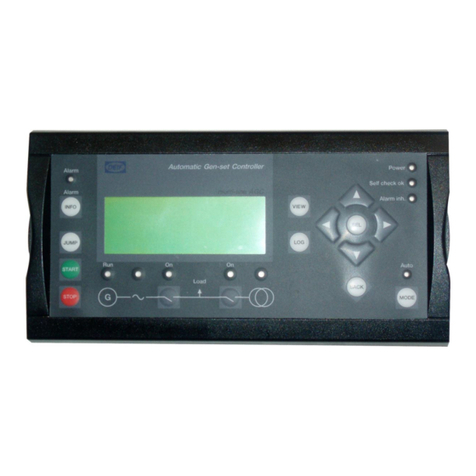
Deif
Deif AGC-4 quick start guide

Sumpo Electric Co., Ltd.
Sumpo Electric Co., Ltd. P9000 instruction manual
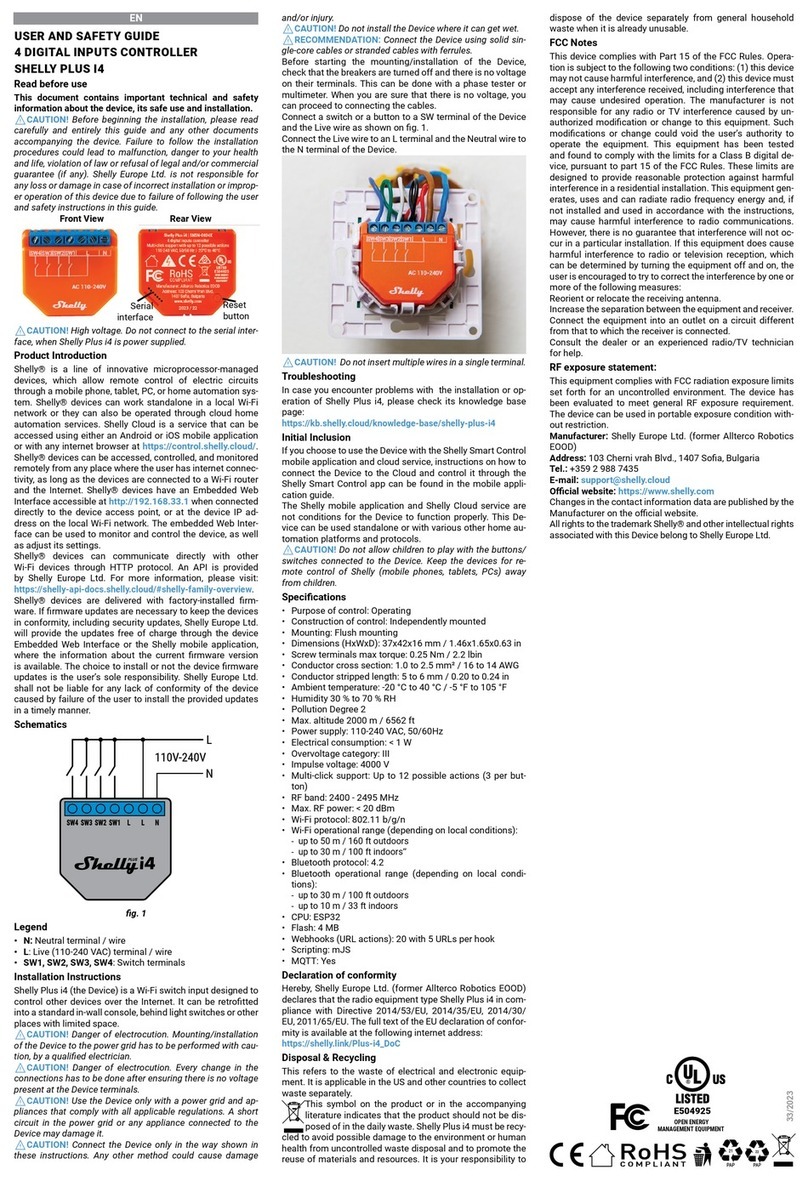
Shelly
Shelly PLUS I4 General user and safety guide

Deif
Deif PICUS PPM 300 installation instructions
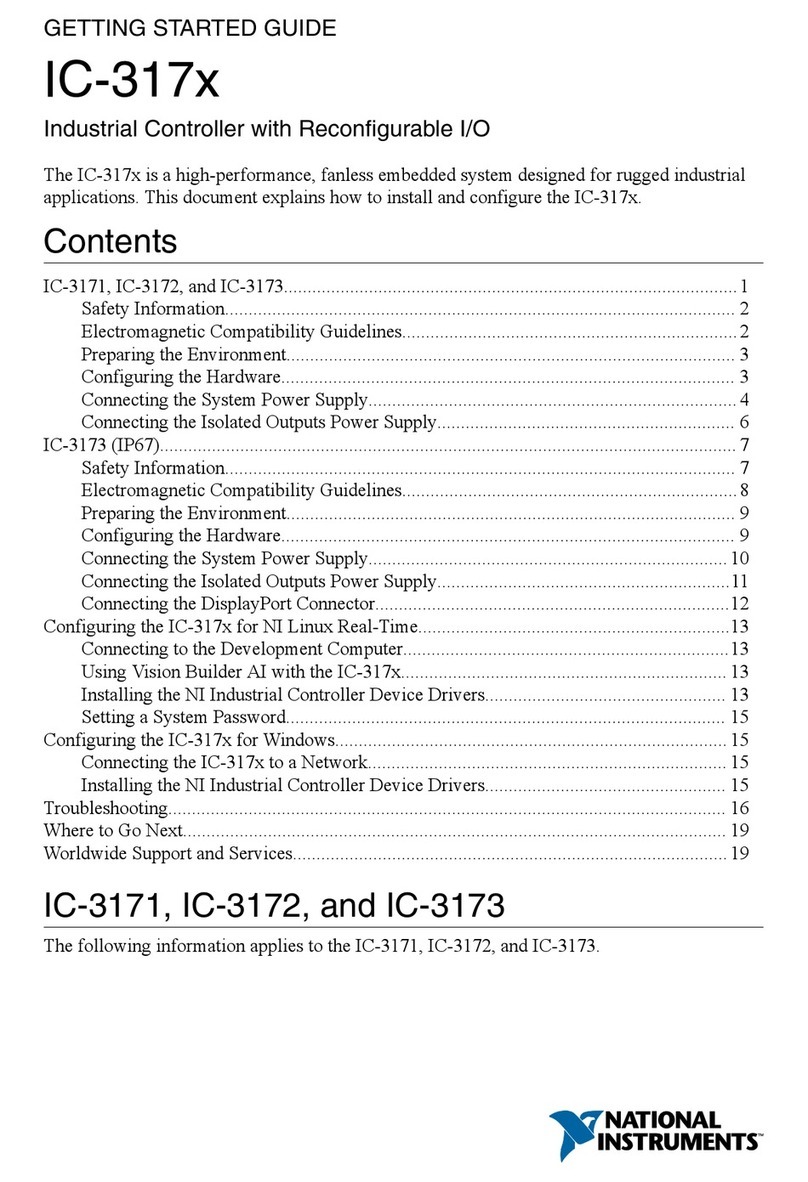
National Instruments
National Instruments IC-3171 Getting started guide
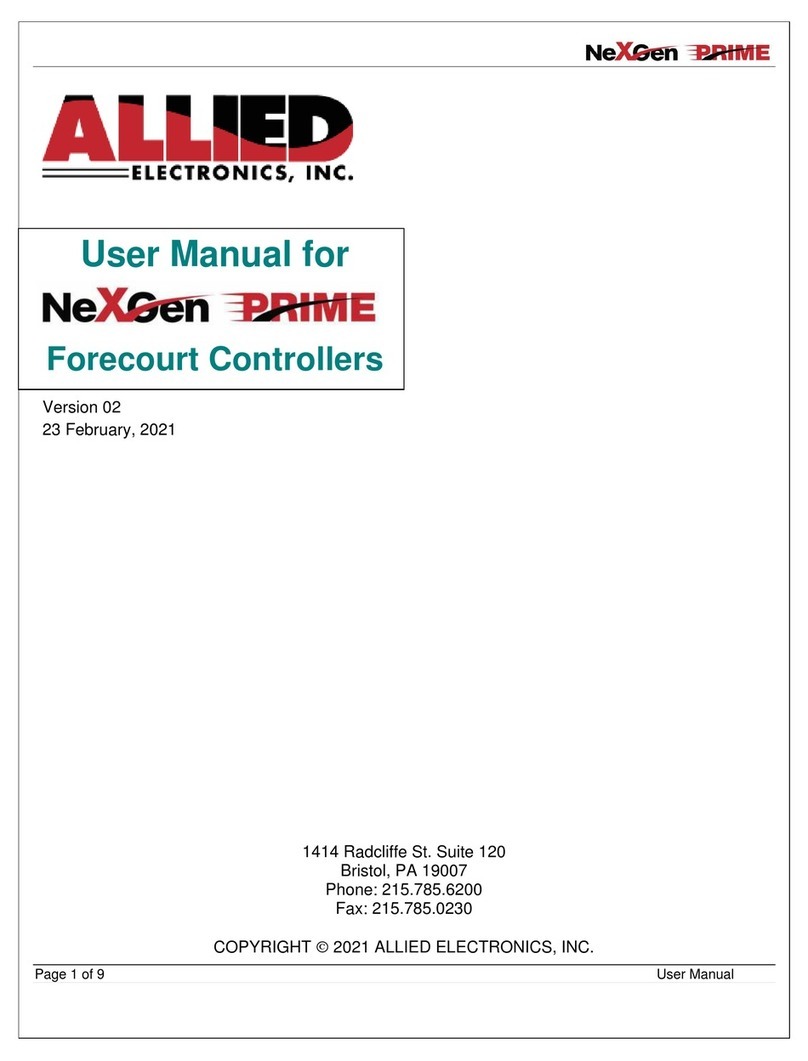
ALLIED ELECTRONICS
ALLIED ELECTRONICS NeXGen Prime user manual
